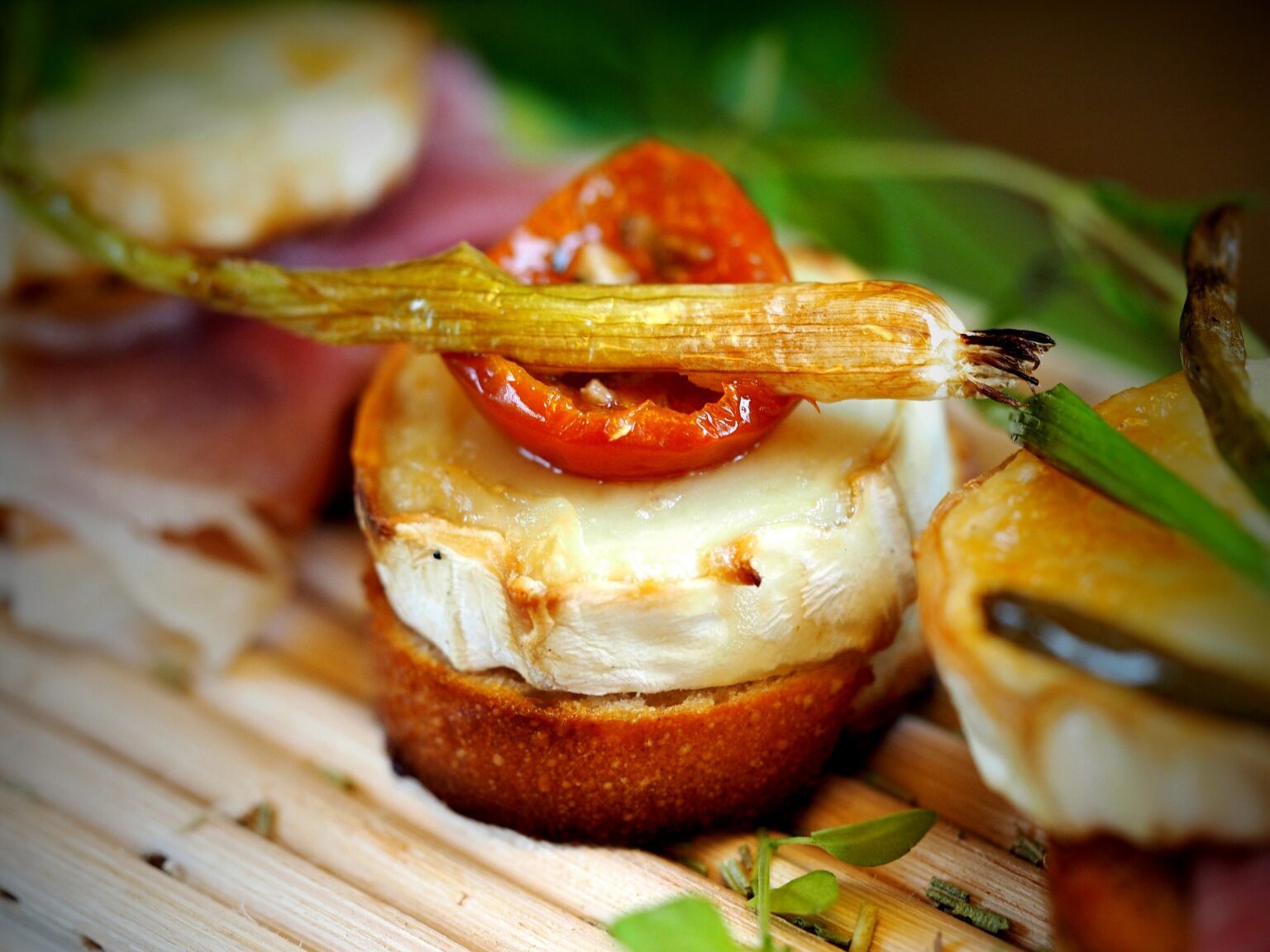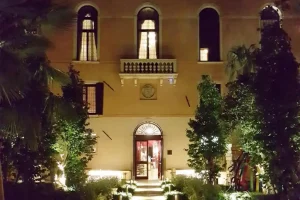Taste Venice Like a Local: A Complete Guide to Cicchetti, Bacari & Venetian Food Culture
Venice isn’t just about gondolas, grand palaces, and Renaissance art — it’s also a food lover’s paradise. But here’s the thing: the best Venetian meals aren’t found under chandeliers or behind white tablecloths. They’re discovered in tiny bacari (traditional Venetian wine bars), through bites of cicchetti (small local snacks), and sips of ombra — a small glass of local wine enjoyed at the counter or along a quiet canal.
To truly understand Venice, you have to eat like a Venetian: standing elbow-to-elbow with locals, nibbling on seafood delights, and toasting “salute!” before moving on to the next spot. It’s social, spontaneous, and wonderfully simple — a ritual that captures the city’s soul far better than any fancy tasting menu ever could.
In this guide, we’ll take you on a flavorful walk through Venice’s authentic culinary scene — where to go, what to order, and how to savor it all like someone who truly belongs here. So loosen your belt, grab your appetite, and let’s begin our bacaro adventure.
🍢 What Are Cicchetti?
Cicchetti (pronounced chi-KEH-tee) are Venice’s answer to Spanish tapas: small, flavorful bites meant to be paired with wine and enjoyed casually. Affordable, creative, and endlessly varied, they reflect centuries of Venetian life — from fishermen bringing in the morning catch to market vendors grabbing a quick bite between customers.
Walk into any local bacaro and you’ll see trays lined with crostini, seafood, and fried goodies. Every bite tells a story of the lagoon.
Typical Cicchetti You’ll Find
- Sarde in saor — sweet-and-sour sardines with caramelized onions, raisins, and pine nuts
- Baccalà mantecato — whipped cod spread on toasted bread (a Venetian classic!)
- Polpette — fried meatballs, often made from beef, tuna, or even pumpkin
- Mozzarella in carrozza — fried mozzarella sandwiches that melt in your mouth
- Anchovy & artichoke crostini — a briny, earthy combination beloved by locals
- Tramezzini — small, soft sandwiches filled with egg, tuna, or prosciutto
Venetians usually enjoy cicchetti standing at the bar, chatting with friends, or watching the world drift by. It’s not a sit-down meal — it’s a social rhythm, a delicious pause in the day.
🍷 How to Eat Cicchetti Like a Venetian
There’s no wrong way to eat cicchetti, but there is a very Venetian way to do it. Here’s how to blend in seamlessly:
- Skip the menu. Just point to whatever looks fresh in the glass display. The barman will plate it for you.
- Ask for “un’ombra.” That’s a small glass of house wine — the perfect pairing and part of the ritual.
- Eat, drink, move on. Don’t camp out — Venetians enjoy two or three bites, a sip, then wander to the next bar.
This is how locals spend their evenings: hopping from bacaro to bacaro, exploring new flavors, seeing old friends, and letting the city’s rhythm carry them. We call it the Bacaro Crawl — and it’s one of the most authentic experiences you can have here.
If you’d like to experience it with a guide who knows the hidden gems, join our Venice Cicchetti & Wine Tour — a delicious walk through real Venetian life, complete with insider stories and the best local wine pairings.
🏮 The Best Bacari in Venice (Handpicked by Locals)
1️⃣ All’Arco (San Polo)
Just steps from the Rialto Market, this family-run bacaro is legendary. Locals line up early for its market-fresh ingredients and bite-sized perfection. Try the baccalà mantecato crostini or anchovies with citrus zest. It’s standing room only — and worth every second.
2️⃣ Cantina Do Mori (San Polo)
Dating back to 1462, this atmospheric spot is said to be one of the oldest wine bars in Venice. Copper pots hang from the ceiling, the walls glow with centuries of stories, and the wine flows freely. Order an ombra of red and a plate of cheese or salumi — it’s a sip of history itself.
3️⃣ Osteria Al Squero (Dorsoduro)
Across from the historic Squero di San Trovaso (where gondolas are still built by hand), this lively bacaro is a favorite among students and artisans. Grab a few crostini topped with tuna or speck, sit by the canal, and watch the gondola makers at work — it doesn’t get more Venetian than this.
4️⃣ Vino Vero (Cannaregio)
Trendy yet rooted in tradition, Vino Vero is famous for its natural wines and creative cicchetti. Think burrata with anchovies or zucchini cream with mint. The atmosphere along Fondamenta della Misericordia is electric — a mix of locals, music, and clinking glasses. Perfect for a relaxed evening crawl.
5️⃣ Antiche Carampane (San Polo)
This one’s a sit-down gem for when you’re ready to level up. Hidden in a maze of alleys, Antiche Carampane serves some of the best seafood in Venice — spaghetti alle vongole, fried soft-shell crab, raw fish platters. It’s pricier than a bacaro, but unforgettable. Reserve ahead.
🍇 Pairing Cicchetti with Venetian Wines
In Venice, wine is more than a drink — it’s a way of life. Locals don’t talk about vintages or tasting notes; they simply ask for “un’ombra” (literally “a shadow”) — a term that dates back to merchants drinking wine in the shade of St. Mark’s Campanile.
✨ White Wines to Try
- Soave: Crisp and mineral, perfect with seafood cicchetti.
- Prosecco: The region’s sparkling treasure — best enjoyed before sunset on a sunset lagoon cruise.
- Pinot Grigio: Light, fruity, and universally beloved.
🍷 Red Wines to Try
- Raboso: A bold, rustic Venetian red — perfect for meat or fried bites.
- Valpolicella: Fresh, easy-drinking, from the Verona hills.
- Amarone: Deep, velvety, and meant to linger over conversation.
And for true connoisseurs, pair your culinary adventure with a day trip through the Prosecco Hills — where the bubbles are born and the views are as intoxicating as the wine itself.
🕔 When & Where to Go for Cicchetti
Best Times of Day
- Midday (12 PM – 2 PM): Locals pop in for a light lunch between errands.
- Early Evening (5:30 PM – 8 PM): The golden hour of aperitivo — when Venice glows and laughter fills the air.
Best Neighborhoods for Bacaro Hopping
- Cannaregio: Along Fondamenta della Misericordia — relaxed, youthful, and full of character.
- Dorsoduro: Artsy, near university life, ideal for mingling with locals.
- San Polo: Historic heart of the bacaro tradition, near the Rialto Market.
Want to skip the guesswork? Book our Cicchetti & Wine Tour — we’ll lead you through authentic bacari, introduce you to passionate owners, and ensure every bite and sip tells a story.
🍴 Tips for Food Lovers in Venice
- 🚫 Avoid eating in St. Mark’s Square. The view is beautiful — the bill, less so.
- 💶 No tipping needed. A few coins are appreciated but never expected.
- 👀 Follow the locals. If it’s full of Venetians, you’ve found the real deal.
- 📅 Book dinner in advance. Especially on weekends or near major holidays.
- 🍮 Save room for dessert. Try Venetian frittelle and tiramisù — the perfect finale to a day of indulgence.
🎨 Beyond the Bacaro: How Food Reflects Venice’s Soul
Every bite in Venice has roots in the lagoon — in fishermen’s labor, traders’ journeys, and the ingenuity of cooks who learned to make the most of what the sea and seasons offered. That’s why Venetian cuisine feels both humble and refined. It’s born of necessity, elevated by artistry, and flavored with history.
Even the way Venetians eat — standing, sharing, savoring — mirrors the city’s rhythm. There’s no rush, no spectacle. Just community, conversation, and craft.
It’s this same spirit that defines many of our favorite Venetian workshops — from mask-making to glassblowing. Whether it’s art or food, Venetians believe in the beauty of things made slowly, by hand, and with heart.
💬 Conclusion: Savor the Real Flavor of Venice
To taste Venice is to understand Venice. The city’s food tells stories — of fishermen at dawn, of spice merchants from the East, of families who’ve passed down recipes for generations. Whether you’re sipping an ombra beside a canal or sharing cicchetti with new friends, you’re part of that living story.
So come hungry. Eat with your hands. Raise a glass. And let Venice feed not just your body, but your soul.
🍷 Book Your Private Cicchetti & Wine Tour
Discover the city’s best bacari, wines, and hidden flavors with a true Venetian guide.
FAQs About Eating Like a Local in Venice
What exactly are cicchetti and how do you order them?
Cicchetti (pronounced chee-KEH-tee) are small Venetian snacks — think tapas with an Italian soul. They’re served at bacari, and the best way to order is to step up to the counter, point to what looks good, and pair your selection with an ombra (a small glass of wine). Most cicchetti cost between €3.00 and €5.00, so you can try a bit of everything
What’s the difference between a bacaro and a restaurant?
A bacaro is Venice’s version of a neighborhood wine bar — casual, standing-room-only, and buzzing with local chatter. You drop in for a quick drink and a few bites, then move on to the next one. Restaurants (osterie or trattorie) are for full sit-down meals, but bacari are where Venice’s social life truly happens.
What are must-try Venetian dishes besides cicchetti?
Don’t miss baccalà mantecato (creamy salt cod spread), sarde in saor (sweet-and-sour sardines), bigoli in salsa (anchovy and onion pasta), and risotto al nero di seppia (squid-ink risotto). Pair them with a chilled glass of Prosecco or a Spritz Select for the most authentic Venetian flavor experience.







